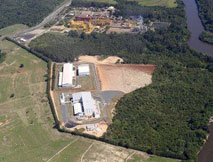
Speciality chemicals firm Lanxess has inaugurated its new compounding plant in Porto Feliz, Brazil. With an investment of EUR20 million, the facility will initially produce 20,000 tonnes/year of PA and PBT compounds targeted at the automotive sector.
The new plant is supporting above all the growing demand toward products for the megatrend mobility in Latin America. For example in Brazil, the fourth largest automotive market globally, a governmental program called “Inovar-Auto” has been implemented in early 2013. It offers fiscal incentives for OEMs that strengthen their production as well as their investments in research and development in Brazil and produce cars which are more energy efficient. With the new facility, Lanxess says it is able to meet the local demand for high-tech plastics used in the automotive sector.
"This major investment in a state-of-the-art compounding plant underlines our strong commitment to our customers in Brazil and Latin America, who can now count on local production, engineering and technical services as well as excellent product quality and customer service," said Werner Breuers, member of the Lanxess Board of Management.
In the new compounding plant, the basic polymers polyamide (PA) and polybutylene terephthalate (PBT) are mixed and refined with special additives and glass fibre, according to client requirements, to make the high-tech plastic product lines Durethan and Pocan. These materials are used for the manufacturing of much lighter parts, which can replace metal components in vehicles, thus helping to reduce fuel consumption and CO2 emissions.
Both plastics have a wide variety of applications, such as door handles, bumpers, front ends, cable connectors, cooling pipes, among others.
Since 2012, Lanxess has been greatly expanding its global production network for high-tech plastics. In Antwerp, Belgium, the company is currently completing a new plant for polyamide plastics. The world-scale facility is designed for a capacity of 90,000 tonnes/year and scheduled to start operation in the third quarter of 2014.
The High Performance Materials (HPM) business unit with roughly 1,700 employees worldwide is part of the Performance Polymers segment, which generated EUR4.5 billion in sales in fiscal 2013. HPM is backward integrated in the value chain. It manufactures the precursors for its high-tech plastics, like glass fibres for the PA and PBT compounds, the polyamide 6 monomer caprolactam and its raw materials all in its own plants.
Meanwhile, the Porto Feliz is a large site for Lanxess with 310 employees and the German company has become one of the largest chemical companies in Brazil following its acquisition of Petroflex in 2008 and employs roughly 1,100 workers at seven sites. Brazil now accounts for 9% of Lanxess’s sales.
The business unit Rhein Chemie has been producing rubber additives for about ten years at Porto Feliz. Since 2013, it also makes high-performance bladders at the site. In 2014, a new facility to manufacture pre-dispersed polymer-bound rubber additives will be added. The business unit Inorganic Pigments also houses a production unit at the site.
(PRA)

















